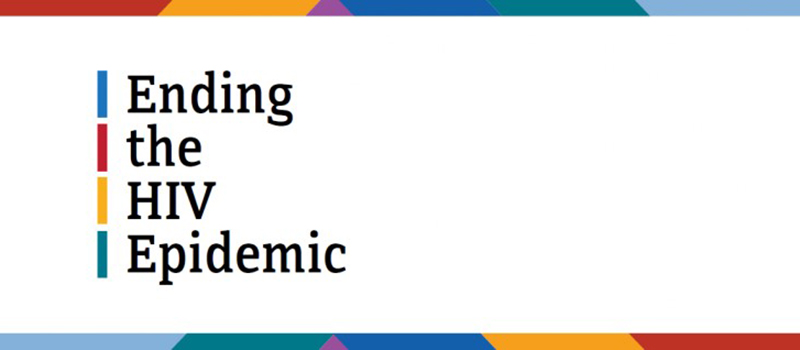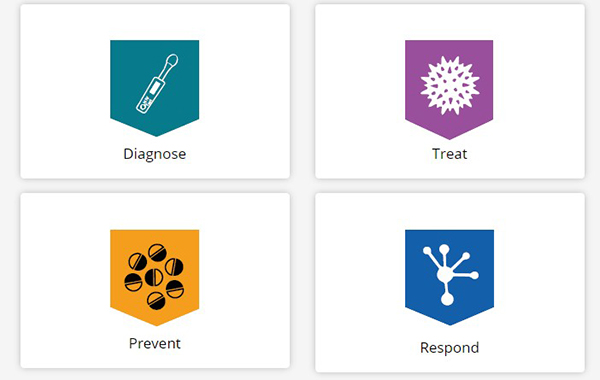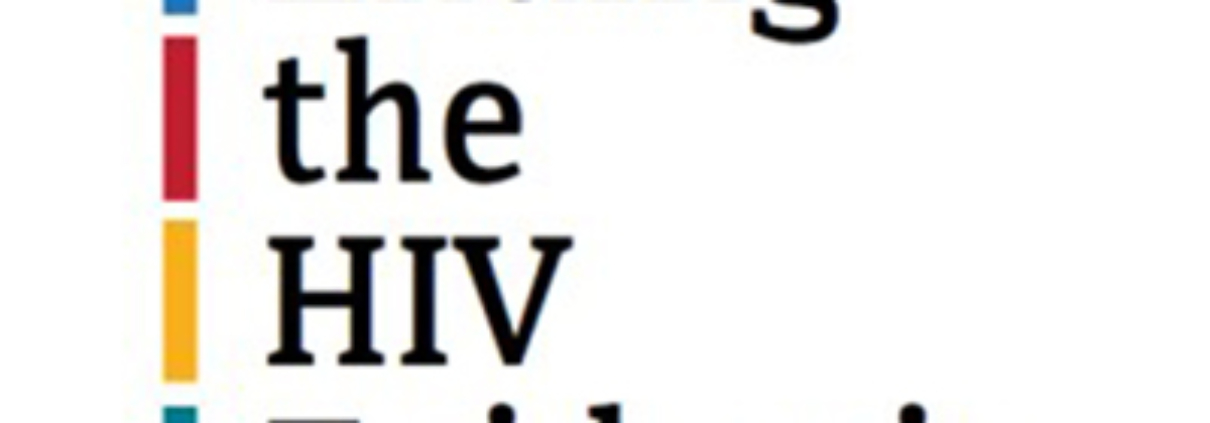The Role of Health Communications in Ending the HIV Epidemic

It has been over a year since the President announced the Ending the HIV Epidemic: A Plan for America initiative (EHE) in February 2019. EHE is the U.S. Department of Health and Human Service’s (HHS) plan to reduce new HIV infections by 90% in 10 years and to end HIV in the United States by 2030. Now, DLH’s public health professionals are taking a moment to reflect on EHE’s opportunities and challenges and the role of health communication in ending HIV.
In reinvigorating the national call-to-action for ending HIV, EHE has secured funding for key geographic hotspots and renewed collaboration among federal agencies and community stakeholders. While EHE is focused on the biomedical intervention Pre-exposure prophylaxis (PrEP), currently available as a pill that is shown to be 99% effective in preventing HIV acquisition, we also need to ensure that solutions include holistic approaches to combat the social determinants of health driving HIV transmission.
DLH has supported federal agencies in creating innovative health communication solutions for HIV prevention during the past 15 years. DLH has recently supported the Centers for Disease Control and Prevention’s (CDC) EHE health communication efforts—developing websites, creating digital content, formulating social media strategy, and engaging prevention partners.
By itself, communication cannot solve the complex issues in HIV care and prevention. However, health communication strategies continue to be a vital part of the solution at the individual, community, and societal levels. The four pillars of EHE are: (1) Diagnose all people with HIV (PLWH) as early as possible; (2) Treat people with HIV rapidly and effectively to reach sustained viral suppression; (3) Prevent new HIV transmissions with proven interventions, including PrEP and syringe services programs; and (4) Respond quickly to HIV outbreaks through offering prevention and treatment services to affected populations. Below are selected ways in which health communication in general and DLH, specifically, can, and are, supporting these pillars:

Diagnose
HIV testing is critical. Fourteen percent of PLWH do not know they have HIV and they account for over a third of new HIV transmissions[1]. Implementation of digital campaigns and messages can increase awareness and knowledge of testing and can motivate key populations to get tested[2],[3], thereby reaching key populations where they are. For example, by harnessing the power of micro-influencers in new and emerging digital platforms, such as TikTok, we can amplify the conversation that highlights the disparities of lower HIV testing among young Black gay men in the South[4].
Treat
Anti-retroviral (ART) medicine helps keep the virus under control, yet only 63% of PLWH are successfully taking HIV medicine and are virally suppressed1. Health communication can continue to capitalize on smartphone apps to improve patient engagement in care and ART adherence[5] by encouraging and aiding PLWH to seek and stay in treatment3. By testing gamified interventions and incorporating social media networks, we can continue to leverage mobile applications and the Internet of things. This will improve social support and self-efficacy, increasing the number of interventions and improving treatment and adherence efforts[6].
Prevent
Although we have PrEP, currently the most effective prevention tool, prescribing disparities exist. By 2016, only 18% of those who were at risk for HIV had a PrEP prescription,1 resulting in a disparity where nearly six times as many White men and women had a PrEP prescription as Black men and women[7]. For these communities, we need to translate science into trusted narratives around medication, dispel rumors and myths, and promote transparency. By educating key populations and providers about how to best encourage conversations and take action on PrEP, we can lessen disparities and decrease stigma around this important prevention tool[8].
Access and affordability are additional barriers to PrEP uptake for minority communities[9]. As one component of EHE, HHS’s Ready, Set, PrEP provides free PrEP to those who lack prescription drug coverage, test negative for HIV, and have a prescription for PrEP. Robust health communication approaches – including prevention partnership development, advocacy, policy, and health promotion—can drive toward achievement of the goal for 50% of at-risk populations to have a PrEP prescription.
Respond
Cutting-edge prevention technologies and strategies are important in helping local public health officials identify hotspots where HIV prevention and treatment services are most urgently needed. Innovative use of data, showing where we need to provide services, including data visualization techniques combined with big data analysis, can continue to provide critical public health information to key audiences, including policy makers[10]. Advancements in data science and artificial intelligence will empower our ability to communicate with an increased relevance to users’ needs in closer to real-time than ever before.
To end HIV by 2030, we must apply approaches that incorporate biomedical tools, as well as comprehensive strategies that affect social change. As we test and implement new communications interventions and technologies, there are unimaginable possibilities. What we do know is that we have the tools to end HIV in our lifetime, and using health communications’ agile, innovative, and interdisciplinary strategies to support the four EHE pillars will be key to making that mission a reality. The health communication team at DLH is both excited and humbled to continue to be part of the solution to end HIV.
Contributing Authors:
Everett L. Long, PhD, MA, is the Director of Health Strategy and Evaluation at DLH. He develops and leads health communication efforts in collaboration with CDC’s National Centers for HIV/AIDS, STDs, Viral Hepatitis, and TB Prevention (NCHHSTP).
Sarah Neale, MPH, CHES, is a Sr. Health Communications Specialist at DLH and currently supports CDC’s NCHHSTP through social media strategy and digital content development.
Walter Elias, III, MD, MPH, a board-certified family physician, serves as the Medical Director at DLH Corporation, where his work focuses on the critical role primary care plays in attending to bio-psycho-social aspects of health.
Salaam Semaan, DrPH, MPH, is a Senior Research Associate at DLH with 35-years of experience in public health, including 22 years at CDC. She has published close to 100 publications, reflecting collaborative work in prevention of infectious disease, chronic disease, and substance use disorders.
[1] Harris, N. S., Johnson, A. S., Huang, Y. L. A., Kern, D., Fulton, P., Smith, D. K., … & Hall, H. I. (2019). Vital signs: status of human immunodeficiency virus testing, viral suppression, and HIV preexposure prophylaxis—United States, 2013–2018. Morbidity and Mortality Weekly Report, 68(48), 1117.
[2] Habarta, N., Boudewyns, V., Badal, H., Johnston, J., Uhrig, J., Green, D., … & Stryker, J. E. (2017). CDC’S Testing Makes Us Stronger (TMUS) campaign: was campaign exposure associated with HIV testing behavior among black gay and bisexual men?. AIDS Education and Prevention, 29(3), 228-240.
[3] Vermund, S. H., Mallalieu, E. C., Van Lith, L. M., & Struthers, H. E. (2017). Health Communication and the HIV Continuum of Care. Journal of acquired immune deficiency syndromes (1999), 74 Suppl 1(Suppl 1), S1–S4. doi:10.1097/QAI.0000000000001211
[4] Marano, M., Stein, R., Song, W., Patel, D., Taylor-Aidoo, N., Xu, S., & Scales, L. (2018). HIV Testing, Linkage to HIV Medical Care, and Interviews for Partner Services Among Black Men Who Have Sex with Men—Non–Health Care Facilities, 20 Southern US Jurisdictions, 2016. Morbidity and Mortality Weekly Report, 67(28), 778.
[5] Mizuno, Y., Zhu, J., Crepaz, N., Beer, L., Purcell, D. W., Johnson, C. H., Valverde, E. E., & Skarbinski, J. (2014). Receipt of HIV/STD prevention counseling by HIV-infected adults receiving medical care in the United States. AIDS (London, England), 28(3), 407–415. https://doi.org/10.1097/QAD.0000000000000057.
[6] Muessig, K. E., LeGrand, S., Horvath, K. J., Bauermeister, J. A., & Hightow-Weidman, L. B. (2017). Recent mHealth interventions to support medication adherence among HIV-positive men who have sex with men. Current Opinion in HIV and AIDS, 12(5), 432.
[7] Ya-lin, A. H., Zhu, W., Smith, D. K., Harris, N., & Hoover, K. W. (2018). HIV preexposure prophylaxis, by race and ethnicity—United States, 2014–2016. Morbidity and Mortality Weekly Report, 67(41), 1147.
[8] Petroll, A. E., Walsh, J. L., Owczarzak, J. L., McAuliffe, T. L., Bogart, L. M., & Kelly, J. A. (2017). PrEP Awareness, Familiarity, Comfort, and Prescribing Experience among US Primary Care Providers and HIV Specialists. AIDS and behavior, 21(5), 1256–1267. https://doi.org/10.1007/s10461-016-1625-1.
[9] Levy, M. E., Wilton, L., Phillips, G., Glick, S. N., Kuo, I., Brewer, R. A., … & Magnus, M. (2014). Understanding structural barriers to accessing HIV testing and prevention services among black men who have sex with men (BMSM) in the United States. AIDS and Behavior, 18(5), 972-996.
[10] Valdiserri, R. O., & Sullivan, P. S. (2018). Data visualization promotes sound public health practice: the AIDSvu example. AIDS Education and Prevention, 30(1), 26-34.





Leave a Reply
Want to join the discussion?Feel free to contribute!